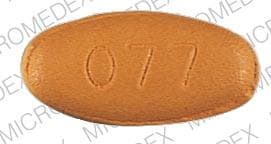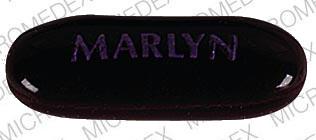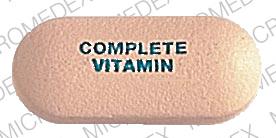Dosage Forms
Excipient information presented when available (limited, particularly for generics); consult specific product labeling. [DSC] = Discontinued product
Capsule, Oral:
Generic: Folic acid 1 mg, cyanocobalamin 400 mcg, and pyridoxine hydrochloride 50 mg
Tablet, Oral:
Airavite: Folic acid 2.5 mg, cyanocobalamin 1000 mcg, and pyridoxine hydrochloride 25 mg
Av-VITE FB: Folic acid 2.5 mg, cyanocobalamin 1000 mcg, and pyridoxine hydrochloride 25 mg
CenFol: Folic acid 2.3 mg, cyanocobalamin 2000 mcg, and pyridoxine hydrochloride 24.5 mg
FaBB: Folic acid 2.2 mg, cyanocobalamin 1000 mcg, and pyridoxine hydrochloride 25 mg
Folbee: Folic acid 2.5 mg, cyanocobalamin 1000 mcg, and pyridoxine hydrochloride 25 mg [dye free, lactose free, and sugar free]
Folbic: Folic acid 2.5 mg, cyanocobalamin 2000 mcg, and pyridoxine hydrochloride 25 mg
Folgard RX: Folic acid 2.2 mg, cyanocobalamin 1000 mcg, and pyridoxine hydrochloride 25 mg
Folplex 2.2: Folic acid 2.2 mg, cyanocobalamin 500 mcg, and pyridoxine hydrochloride 25 mg
Foltabs 800: Folic acid 0.8 mg, cyanocobalamin 115 mcg, and pyridoxine hydrochloride 10 mg [gluten free]
Homocysteine Formula: Folic acid 0.8 mg, cyanocobalamin 100 mcg, and pyridoxine hydrochloride 50 mg
Niva-Fol: Folic acid 2.5 mg, cyanocobalamin 2000 mcg, and pyridoxine hydrochloride 25 mg [DSC]
NuFol: Folic acid 2.5 mg, cyanocobalamin 1000 mcg, and pyridoxine hydrochloride 25 mg
Virt-Gard: Folic acid 2.2 mg, cyanocobalamin 1000 mcg, and pyridoxine hydrochloride 25 mg
Virt-Vite: Folic acid 2.5 mg, cyanocobalamin 1000 mcg, and pyridoxine hydrochloride 25 mg [DSC]
Virt-Vite Forte: Folic acid 2.5 mg, cyanocobalamin 2000 mcg, and pyridoxine hydrochloride 25 mg [DSC]
Vita-Respa: Folic acid 2.2 mg, cyanocobalamin 1300 mcg, and pyridoxine hydrochloride 25 mg [dye free and sugar free] [DSC]
Generic: Folic acid 0.5 mg, cyanocobalamin 200 mcg, pyridoxine hydrochloride 5 mg; Folic acid 0.8 mg, cyanocobalamin 100 mcg, and pyridoxine hydrochloride 50 mg; Folic acid 2.2 mg, cyanocobalamin 500 mcg, and pyridoxine hydrochloride 25 mg; Folic acid 2.5 mg, cyanocobalamin 200 mcg, and pyridoxine hydrochloride 25 mg
Use: Labeled Indications
Nutritional supplement in end-stage renal failure, dialysis, hyperhomocysteinemia, homocystinuria, malabsorption syndromes, dietary deficiencies
Contraindications
Hypersensitivity to folic acid, cyanocobalamin, pyridoxine, or any component of the formulation
Dosage and Administration
Dosing: Adult
Dietary supplement: Oral: One tablet daily
Dosing: Geriatric
Refer to adult dosing.
Storage
Store at controlled room temperature of 15°C to 30°C (59°F to 96°F).
Folic Acid, Cyanocobalamin, and Pyridoxine Images
Drug Interactions
Altretamine: Pyridoxine may diminish the therapeutic effect of Altretamine. Specifically when altretamine is used in combination with Cisplatin the response duration may be diminished. Consider therapy modification
Barbiturates: Pyridoxine may increase the metabolism of Barbiturates. Apparent in high pyridoxine doses (eg, 200 mg/day) Monitor therapy
Chloramphenicol (Systemic): May diminish the therapeutic effect of Vitamin B12. Monitor therapy
Colchicine: May decrease the serum concentration of Cyanocobalamin. Monitor therapy
Fluorouracil Products: Folic Acid may enhance the adverse/toxic effect of Fluorouracil Products. Monitor therapy
Fosphenytoin: Folic Acid may decrease the serum concentration of Fosphenytoin. Monitor therapy
Fosphenytoin: Pyridoxine may increase the metabolism of Fosphenytoin. This is most apparent in high pyridoxine doses (e.g., 80 mg to 200 mg daily) Monitor therapy
Green Tea: May decrease the serum concentration of Folic Acid. Monitor therapy
Levodopa-Containing Products: Pyridoxine may diminish the therapeutic effect of Levodopa-Containing Products. Management: The concomitant use of pyridoxine and levodopa (in the absence of a dopa decarboxylase inhibitor (DDI)) should be avoided. Use of a DDI (eg, carbidopa) with levodopa will essentially eliminate the risk of this interaction. Consider therapy modification
PHENobarbital: Folic Acid may decrease the serum concentration of PHENobarbital. Monitor therapy
Phenytoin: Folic Acid may decrease the serum concentration of Phenytoin. Monitor therapy
Phenytoin: Pyridoxine may increase the metabolism of Phenytoin. This is most apparent in high pyridoxine doses (e.g., 80 mg to 200 mg daily) Monitor therapy
Primidone: Folic Acid may decrease the serum concentration of Primidone. Additionally, folic acid may decrease concentrations of active metabolites of primidone (e.g., phenobarbital). Monitor therapy
Pyrimethamine: Folic Acid may diminish the therapeutic effect of Pyrimethamine. Management: Folic acid doses greater than 2.5 mg per day should be avoided due to the potential for sulfadoxine/pyrimethamine treatment failure. Consider limiting folic acid use to no more than 0.4 mg per day for women of child-bearing age. Consider therapy modification
Raltitrexed: Folic Acid may diminish the therapeutic effect of Raltitrexed. Avoid combination
Sulfadoxine: Folic Acid may diminish the therapeutic effect of Sulfadoxine. Management: Folic acid doses greater than 2.5 mg per day should be avoided due to the potential for sulfadoxine/pyrimethamine treatment failure. Consider limiting folic acid use to no more than 0.4 mg per day for women of child-bearing age. Consider therapy modification
SulfaSALAzine: May decrease the serum concentration of Folic Acid. Monitor therapy
Adverse Reactions
See individual agents.
Warnings/Precautions
See individual agents.
Pregnancy
Pregnancy Considerations
See individual agents.
Patient Education
- Discuss specific use of drug and side effects with patient as it relates to treatment. (HCAHPS: During this hospital stay, were you given any medicine that you had not taken before? Before giving you any new medicine, how often did hospital staff tell you what the medicine was for? How often did hospital staff describe possible side effects in a way you could understand?)
- Patient may experience diarrhea, fatigue, nausea, or headache. Have patient report immediately to prescriber burning or numbness feeling, or edema (HCAHPS).
- Educate patient about signs of a significant reaction (eg, wheezing; chest tightness; fever; itching; bad cough; blue skin color; seizures; or swelling of face, lips, tongue, or throat). Note: This is not a comprehensive list of all side effects. Patient should consult prescriber for additional questions.
Intended Use and Disclaimer: Should not be printed and given to patients. This information is intended to serve as a concise initial reference for health care professionals to use when discussing medications with a patient. You must ultimately rely on your own discretion, experience, and judgment in diagnosing, treating, and advising patients.






